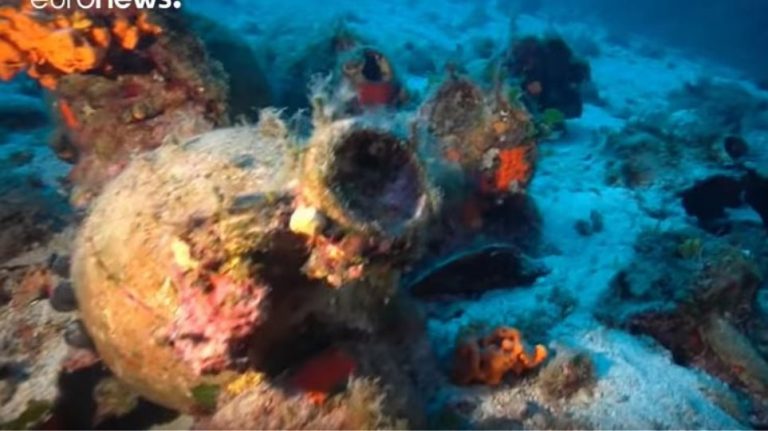Underwater archaeologists have discovered 58 shipwrecks from ancient and medieval Greece in the Aegean Sea. They were found off the Fournoi archipelago and represent the richest source of ancient wrecks in the Greek Territory and one of the richest in the Mediterranean Sea. They say may be the largest concentration of ancient wrecks ever found in the Aegean and possibly the whole of the Mediterranean.
The wrecks lie in the small island archipelago of Fournoi, in the Eastern Aegean, and span a huge period from ancient Greece right through to the 20th century. Most are dated to the Greek, Roman and Byzantine eras.
Although shipwrecks can be seen together in the Aegean until now such a large number have not been found together.
Experts say they weave an exciting tale of how ships full of cargo traveling through the Aegean, the Mediterranean and the Black Sea met their fate in sudden storms and surrounded by rocky cliffs in the area.
The discoveries were made as part of an underwater archaeological survey in Fournoi – a project to identify, record and document shipwrecks around the island. Along with the wrecks, archaeologists found hundreds of artifacts, including pottery and anchors. “The excitement is difficult to describe, I mean, it was just incredible. We knew that we had stumbled upon something that was going to change the history books,” said underwater archaeologist and co-director of the Fournoi survey project Dr. Peter Campbell of the RPM Nautical Foundation.
Dr. George Koutsouflakis, coordinator of the archaeological research at Fournoi, stressed that the basic find in these shipwrecks is the amphorae that have been preserved in very good condition.
The foundation is collaborating on the project with Greece’s Ephorate of Underwater Antiquities, which is conducting the research.
When the international team began the underwater survey in 2015, they were astounded to find 22 shipwrecks that year. With their latest finds that number has climbed to 58, and the team believe there are even more secrets lying on the seabed below.
“I would call it, probably, one of the top archaeological discoveries of the century in that we now have a new story to tell of a navigational route that connected the ancient Mediterranean,” Campbell told Reuters.
source: reuters





